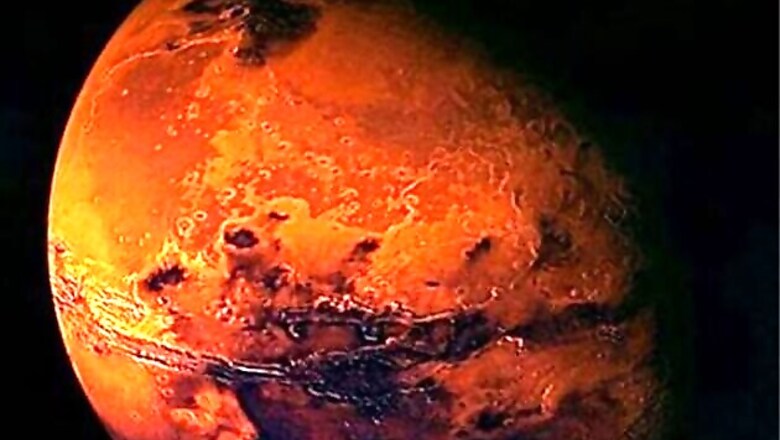
views
Washington:: A mysterious plume that appeared on Mars in 2012 can either be a cloud of ice particles or a Martian aurora, a team of astronomers have said.
Amateur astronomers spotted the bizarre feature rising off the edge of the Red Planet in March and April, 2012.
It looked like a puff of dust coming off the surface but it measured around 200 to 250 km high. That is much higher than expected from the lower-altitude dust storms that rage across the planet.
But the new study led by astronomer AgustAn Sanchez-Lavega from the University of the Basque Country in Bilbao, Spain, does not fully explains the plume -- raising new questions about the state of the Martian atmosphere, the scientific journal nature reported.
"This observation is a big surprise another puzzle on Mars," said Aymeric Spiga, planetary scientist at the University of Pierre and Marie Curie in Paris.
The plume first appeared on March 12, 2012 as a small bump on the dawn side of Mars's southern hemisphere. It changed shape over the next 11 days, morphing from blobs to pillars and other forms.
Within weeks another plume appeared, this one also lasting about a week and a half.
To find an answer, Sanchez-Lavega's team coordinated observations from amateur astronomers and searched imagery from Mars spacecraft. The simplest explanation is that the dust storms that frequently whirl across Mars might have kicked dust up to high altitudes.
But dust has not been seen at altitudes higher than about 50 km in the Martian atmosphere.
"A more plausible explanation is that the plumes were formed by shards of frozen carbon dioxide or water vapour," Sanchez-Lavega noted.
Alternatively, the plume could have been an aurora -- an interaction between charged particles from the Sun and a planet's magnetic field- which are known to occur on Mars.
In the near future, NASA's MAVEN spacecraft and India's Mangalyaan currently orbiting Mars would be able to see a plume if it happened to be looking at the right place at the right time, the authors said.



















Comments
0 comment